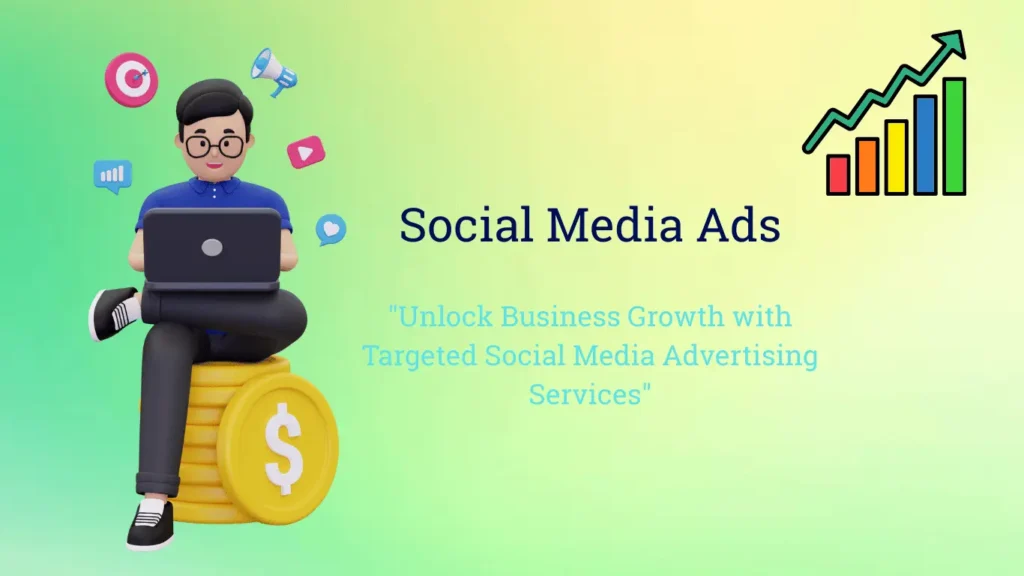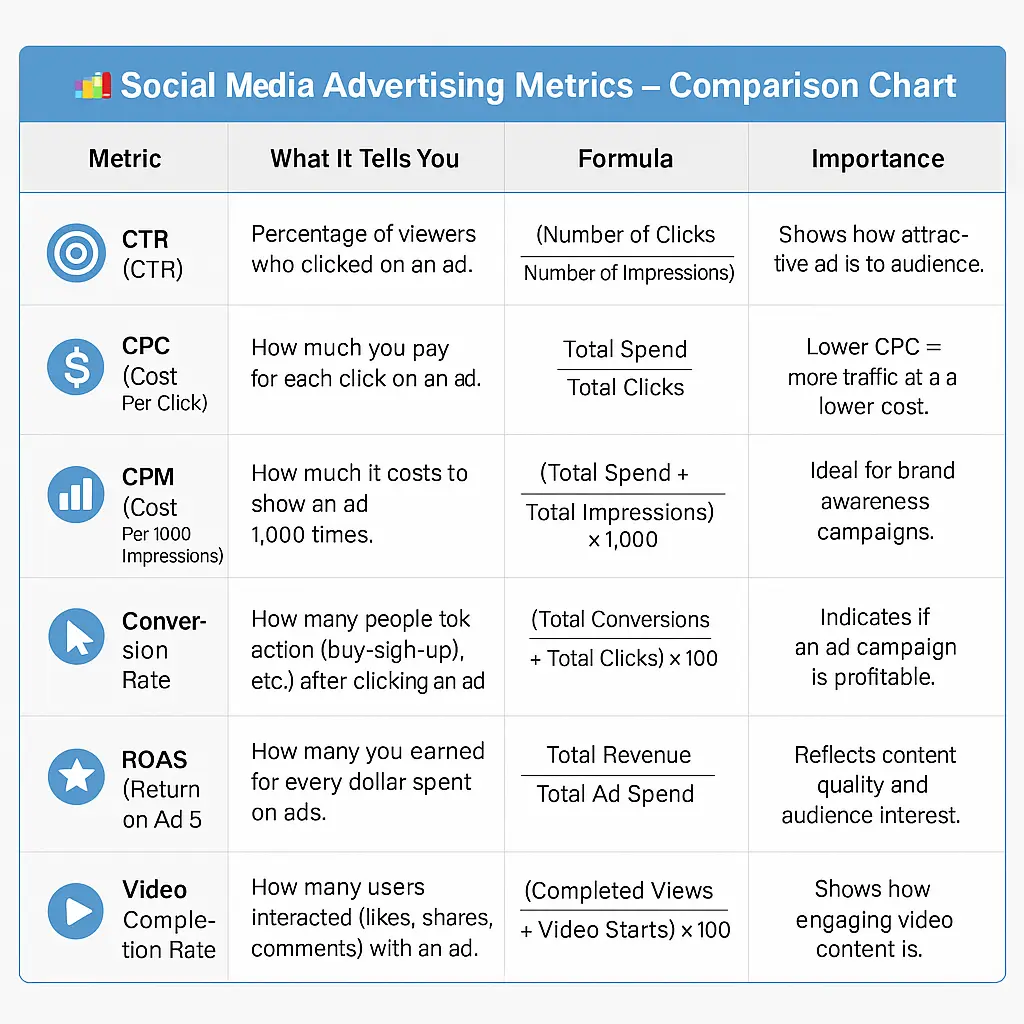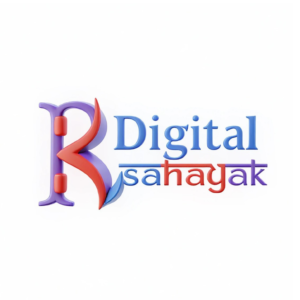Social Media Ads - Maximize Your Reach with Proven Strategy
Social Media Ads is a form of Digital Marketing that uses social media networks to deliver advertisements to a targeted audience. Through Social Media Ads , brands can reach their target customers, increase their exposure, and boost sales of their products and services — all across popular platforms that have billions of active users.

History of Social Media Ads
Today’s social media is full of advanced technologies and features designed to continually improve the user experience. Social Media Ads has evolved a lot these days, and it uses user data to provide highly targeted and engaging content.
However, Social Media Ads didn’t have such sophisticated beginnings. Some experts believe that social media began even before the Internet — as Morse code and then the U.S. Department of Defense’s ARPANET network, which allowed scientists at four universities to share software and data.
The first “true” social media network came out in 1997 — Six Degrees, which allowed users to create profiles and connect with others. This was followed by a few other platforms like Friendster, LiveJournal, Myspace that did not last long.
🎯 Major Benefits of Social Media Ads
1. Precise Targeting : Social media platforms give you advanced targeting options for your ads so that ads are shown only to those users who are interested in your product or service. Such as:
- Age
- Gender
- Location
- Interests – like sports, music, technology, etc.
- Online Behavior
- Retargeting via Website Visitors or Custom Lists
- This makes advertising more effective and cost-efficient.
2. Cost-Effective : Social Media Ads are cost-effective compared to traditional advertising (like TV or print). Example:
- Possible to run ads with a budget of ₹100/day.
- Platforms allow you to limit the maximum daily ad spend. Also, pay based on clicks or impressions (CPC, CPM etc.
3. Measurable Return on Investment: In Social Media Ads Every click, view, and conversion can be tracked.
How many people saw the ad?
- How many clicked?
- Which ad generated the most sales?
4.Increased Brand Awareness : Running regular Social Media Ads makes the user see your brand again and again, which leaves an impression of your ad on the consumer’s mind.
- Keeps the brand in people’s memory.
- Attracts new customers.
- Shows the brand as “trusted” and “established”.
Visual and video content is especially effective in this.
5.Real-Time Performance Tracking: Social Media Platforms provide you with live analytics.
- You can immediately know which ad is performing well and which ad is bringing you more customers.
- If needed, you can change the ad content, budget, or targeting at the same time.
- This feature helps you make quick decisions and avoid losses.
6. Higher Engagement: Social Media Platforms are not just a place to watch entertainment programs but also a place to interact with your friends, relatives and strangers.
- Like, comment, share your advertisement.
- Participate in polls.
- Send direct messages.
- This not only gets views but also creates an emotional connection with the audience, which increases brand loyalty.
.
Social Media Ads Campaign Objectives
j🔵 1. Awareness
Goal: To give information about the brand, product or service of your business to as many people as possible and to reach your advertisement to them so that they can be attracted towards their brand.
✅ Example: A new mobile brand wants to spread its name in the market.
🟡 2. Consideration
Goal: To engage the audience with the brand so that they come to your website, video or page and watch the advertisement run by you. This can increase the traffic on your website or app. So that the public likes, comments and shares your post with other people. It has other functions as well. Such as:
- App Installs: Getting the mobile app installed.
- Video Views: Getting the video content watched.
- Lead Generation: Collecting information (name, email) from potential customers.
- Messages: Starting a conversation through Messenger, WhatsApp or Instagram DM.
✅ Example: A real estate agency runs a lead generation campaign to get a form filled.
🔴 3. Conversion
Goal: The goal is to get the user to take an action after seeing the Social Media Ads — like a purchase, subscription, booking, A purchase on the website, a form submission, or any other specified action, a direct purchase from a product catalog, or driving footfall to an offline store or outlet.
✅ Example: An e-commerce website runs conversion ads to increase sales of its products.
Social Media Platforms
Social Media Platforms refers to online platforms where users can share information and connect with virtual communities through text, videos, photos and other messaging content. Social Media Platforms have evolved so much in today’s time that even children are using them. By 2024, social media had more than five billion global users, which is equivalent to more than 62% of the world’s population.
- Facebook launched in 2004: Facebook is the world’s most used social media platform, with about 3 billion monthly active users. It is used by people of all age groups, especially adults aged 25–54 years. In this, users can share a variety of content such as text, photos, videos, stories, and live streams. Facebook is used for personal communication, group communities, and business marketing. Apart from this, Facebook Marketplace and shopping tools make it extremely useful for business as well.
- Instagram launched in 2010: Instagram, launched in 2010 and now owned by Meta, is a visual-focused platform that is particularly popular among 18–34 year olds. It focuses on photo and video sharing, reels, stories, and influencer culture. Users can buy products on Instagram by talking directly to the seller, and brands use it to build their identity, connect with customers, and promote products.
- X, formerly Twitter launched in 2006: A microblogging platform known for real-time updates and public discussions. It shares short posts (tweets), which are ideal for news, opinions, and trending topics. Businesses use it for customer service, brand communication, and advertising through promoted tweets.
- TikTok launched in 2018: which gained popularity globally in 2018, is extremely popular, especially among Gen Z. It is known for short video content, with content shown by algorithms through a “For You” page. For now, it is blocked in India, meaning the public of India cannot use it. Duets, challenges, and music trends have made it a hub of creativity and viral marketing. Brands use it to connect with young audiences and increase brand awareness through trending content.
- LinkedIn, launched in 2003: A professional networking platform with over 1 billion users. It connects job seekers, professionals, and companies. It shares resume-like profiles, job postings, and professional content. It is extremely important for B2B marketing, hiring, and lead generation.
- Snapchat launched in 2011: A multimedia messaging app popular among the youth. It mainly uses Snaps (photos/videos), Stories, and AR lenses. Its Discover section contains content from publishers and creators. Brands use Snapchat for interactive and creative advertising campaigns.
- YouTube launched in 2005: The largest video sharing platform, where users can watch and upload long and short videos, live streams, and other content. It is a great medium for entertainment, education, and brand promotion. People have now made YouTube their means of earning. There are many monetization options on YouTube, such as advertising, channel membership, and sponsorships, which businesses use.
- Pinterest launched in 2010: A visual discovery platform where users can “pin” ideas. It is especially popular in categories like fashion, food, home decor, and DIY, and is mainly used by women. Businesses use it to increase product exposure and website traffic.
- Reddit launched in 2005: A community-based forum where users discuss specific topics through “subreddits”. It is known for in-depth discussions and user-driven content. Businesses can use it for market research and engagement with specific groups.
- Threads launched in 2023: Launched in 2023 by Meta, is a text-centric platform that is connected to Instagram. It offers a Twitter-like experience, wherein users can share short posts and conversations. It is currently in development and mainly attracts Instagram users and content creators. It has limited business features right now, but there is potential for advertising in the future.

Social Media Platforms | Primary Audience | Best Suited For | Key Ad Formats | Main Strengths | Limitations / Challenges |
Ages 25–54 | B2C, Local Businesses | Image, Video, Carousel, Collection Ads | Excellent targeting, large audience | High competition, less popular with youth | |
Ages 18–34 | Fashion, Beauty, Travel | Reels, Stories, Shopping Ads | High engagement, strong visual appeal | Requires high-quality content | |
TikTok | Ages 14–25 | Trendy Products, Gen Z | In-Feed, TopView, Hashtag Challenges | Viral content, UGC, effective on low budget | Trend-focused, limited low-cost ad options |
YouTube | Ages 15–60+ | Education, Entertainment | Skippable/Non-Skippable Video, Shorts | Long-term branding, deep storytelling | High production costs |
Ages 18–49 (mostly women) | DIY, Home Décor, E-commerce | Promoted Pins, Shopping Ads | Search-driven audience, long visibility | Limited audience, less effective for B2B | |
Professionals, B2B | SaaS, Education, Recruitment | Sponsored Content, InMails | Professional targeting, strong for lead generation | Expensive, limited engagement formats | |
X (Twitter) | Diverse, Info-oriented | News, Brand Awareness | Promoted Tweets, Trends | Real-time engagement, trending content | Unstable user base, content becomes outdated quickly |
Social Media Ads tools
Social Media Tools are tools used to perform various activities related to Social Media Ads.This includes scheduling, publishing, analytics, content creation, and even automation. Social Media Tools are software and applications used to manage your presence on various social media platforms, share content, and engage with audiences. These tools help in performing tasks such as marketing, content creation, and analytics.
Types of Social Media Tools
- Scheduling Tools: These tools help you schedule your content on various Social Media Platforms in advance, saving time and effort and making your tasks easier to perform.
- Analytics Tools: These tools collect and analyze data to track, understand, and improve your social media performance.
- Content Creation Tools: These tools help you create attractive and professional-looking content, using graphics, videos, and images as a format for your Social Media Ads.
- Social media management tools: These tools allow you to manage different social media platforms from one place, such as posting, responding, and viewing analytics.
- Examples of Social Media Tools:
- Hootsuite: A popular social media management tool that allows posting, responding, and viewing analytics across different platforms.
- Buffer: Another popular social media management tool that facilitates scheduling, analytics, and team collaboration.
- Sprout Social: A powerful social media management tool that facilitates advanced analytics, team collaboration, and custom reporting.
- Canva: A graphic design tool that helps create graphics, posters, and other visual content for Social Media Ads.
- Pexels: A free stock photo website that provides high-quality photos for Social Media Ads
- Unsplash: Another free stock photo website that provides high-quality photos for Social Media Ads.
Social Media Ads Metrics
The objective of this module is to help you understand the key metrics used in Social Media Ads campaigns and learn how to analyze them correctly so that you can improve your campaign and get better results from them.
1. CTR (Click Through Rate): CTR tells how many people clicked on an ad after seeing it. Its formula is:CTR = (Number of Clicks ÷ Impressions) × 100
This metric indicates how much your ad is attracting the audience. The higher the CTR, the more effective your ad is considered.
2. CPC (Cost Per Click): CPC measures how much you had to spend on average for a click. Its formula is: CPC = Total Spend ÷ Total Clicks
This metric is helpful in understanding and controlling your ad budget. If the CPC is high, it could be a sign that your ad targeting or content needs improvement.
3. CPM (Cost Per 1,000 Impressions): CPM means how much it cost to show an ad 1,000 times. The formula is: CPM = (Total Spend ÷ Impressions) × 1,000
This metric is extremely important for brand awareness campaigns, where your main goal is to reach as many people as possible.
4. Conversion Rate: This metric shows how many people took an actual action (such as a purchase, filling out a form, etc.) after clicking on the ad. The formula is: Conversion Rate = (Conversions ÷ Clicks) × 100
This measures the effectiveness of the campaign – i.e., whether your ad simply attracted attention or also led to a sale.
5. ROAS (Return on Ad Spend): ROAS tells you how much revenue you get for the money you spend on advertising. The formula is: ROAS = Total Revenue ÷ Ad Spend
This metric is a direct indicator of the profitability of your marketing investment. The higher the ROAS, the more successful the ad is considered.
6. Engagement Rate: Engagement Rate measures how many people responded to your ad — such as liking, commenting, sharing, or saving. The formula is:Engagement Rate = (Engagement ÷ Impressions or Followers) × 100
This metric shows the popularity of content and audience participation, which can be a sign of trust and interest in the brand.
7. Video Completion Rate: If you’re running video ads, this metric shows how many people watched your video to the end. Its formula is: Video Completion Rate = (Completed Watches ÷ Started) × 100This tells how impressive, interesting and engaging your video content is. It also shows how much the video is connecting with the audience.

